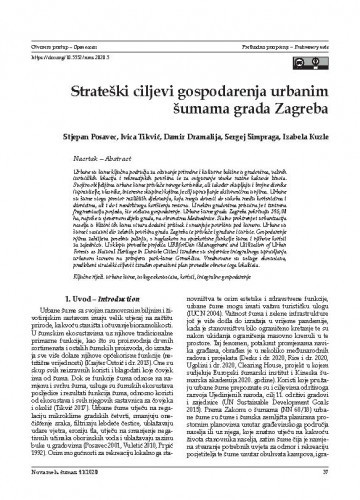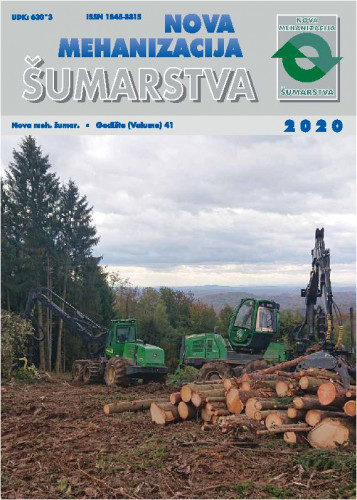Urbane su šume ključna područja za očuvanje prirodne i kulturne baštine u gradovima, važnih turističkih lokacija i rekreacijskih površina te za osiguranje visoke razine kakvoće života. Svojim obilježjima urbane šume privlače mnoge korisnike, ali također okupljaju i brojne dionike (upravitelje, vlasnike, interesne skupine) kojima je cilj upravljanje aktivnostima u njima. Urbane su šume stoga prostor različitih djelovanja, koja mogu dovesti do sukoba među korisnicima i dionicima, ali i do i neodrživoga korištenja resursa. U nekim gradovima prisutna je i iznimna fragmentacija posjeda, što otežava gospodarenje. Urbane šume grada Zagreba pokrivaju 395,08 ha, najviše u sjevernom dijelu grada, na obroncima Medvednice. Stalno proširenje i urbanizacija naselja u blizini tih šuma stvara dodatni pritisak i smanjuje površinu pod šumom. Urbane su šume i sastavni dio zelenih površina grada Zagreba te privlače i građane i turiste. Gospodarenje njima zahtijeva posebnu pažnju, s naglaskom na općekorisne funkcije šuma i njihove koristi za zajednicu. U sklopu provedbe projekta URBforDan (Management and Utilization of Urban Forests as Natural Heritage in Danube Cities) izrađene su smjernice integralnoga upravljanja urbanom šumom na primjeru park-šume Grmoščica. Vrednovane su usluge ekosustava, predloženi strateški ciljevi i izrađen operativni plan provedbe obnove toga lokaliteta.; Urban forests are key areas for preserving natural and cultural heritage within cities, important tourist attractions, and areas for recreation, as well as for ensuring a high quality of living. Due to their characteristics, urban forests attract many users, but also have many stakeholders (managers, owners, interest groups), trying to manage those activities. They are under increasing pressure from a diverse set of activities, which cause conflicts and unsustainable use of resources. Management of urban forests in some cities is further challenged by the extreme fragmentation of ownership that creates issues in management. Urban forests in the City of Zagreb cover 395.08 ha, distributed mostly in the northern part of the city, at the slopes of Medvednica Mountain. Continuous expansion and urbanization of settlements near these forests, create additional pressure and reduces the forest area. Also, urban forests are an integral part of Zagreb’s green areas and attract both citizens and tourists. The management of these forests requires special attention, emphasizing the non-wood forest functions and their impact on the society. As part of the URBforDan Project (Management and Utilization of Urban Forests as Natural Heritage in Danube Cities), a model for integral urban forest management based on the example of Grmoščica forest has been established. Ecosystem services, the proposed strategic goals and operating plan of the location regeneration have also been evaluated.
Sažetak

 Nova mehanizacija šumarstva : 41(2020) / glavni urednik Mario Šporčić.
Nova mehanizacija šumarstva : 41(2020) / glavni urednik Mario Šporčić.